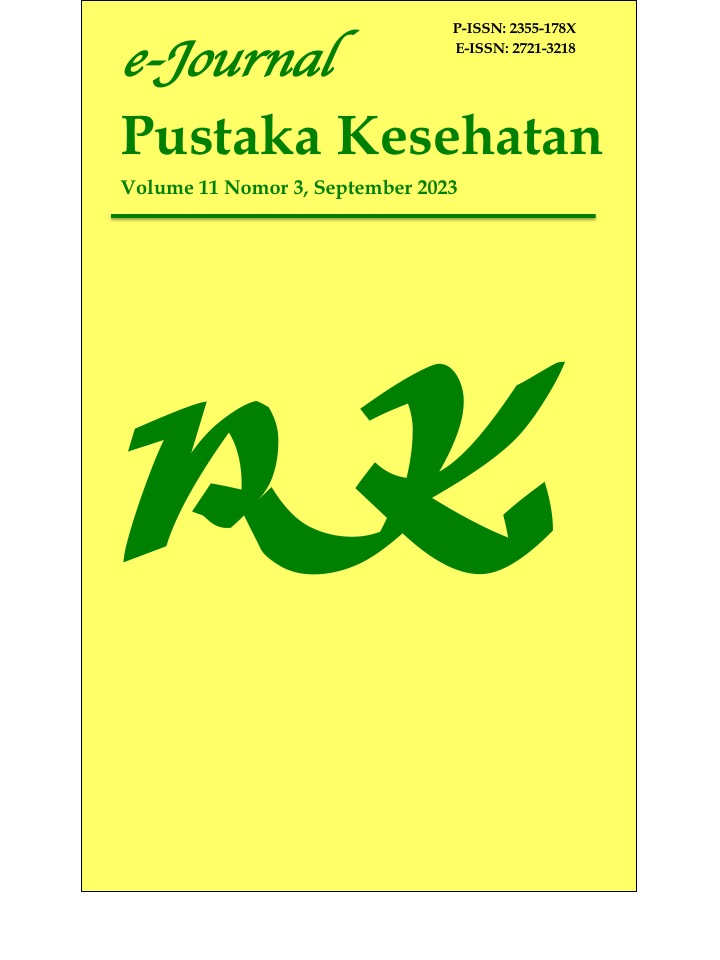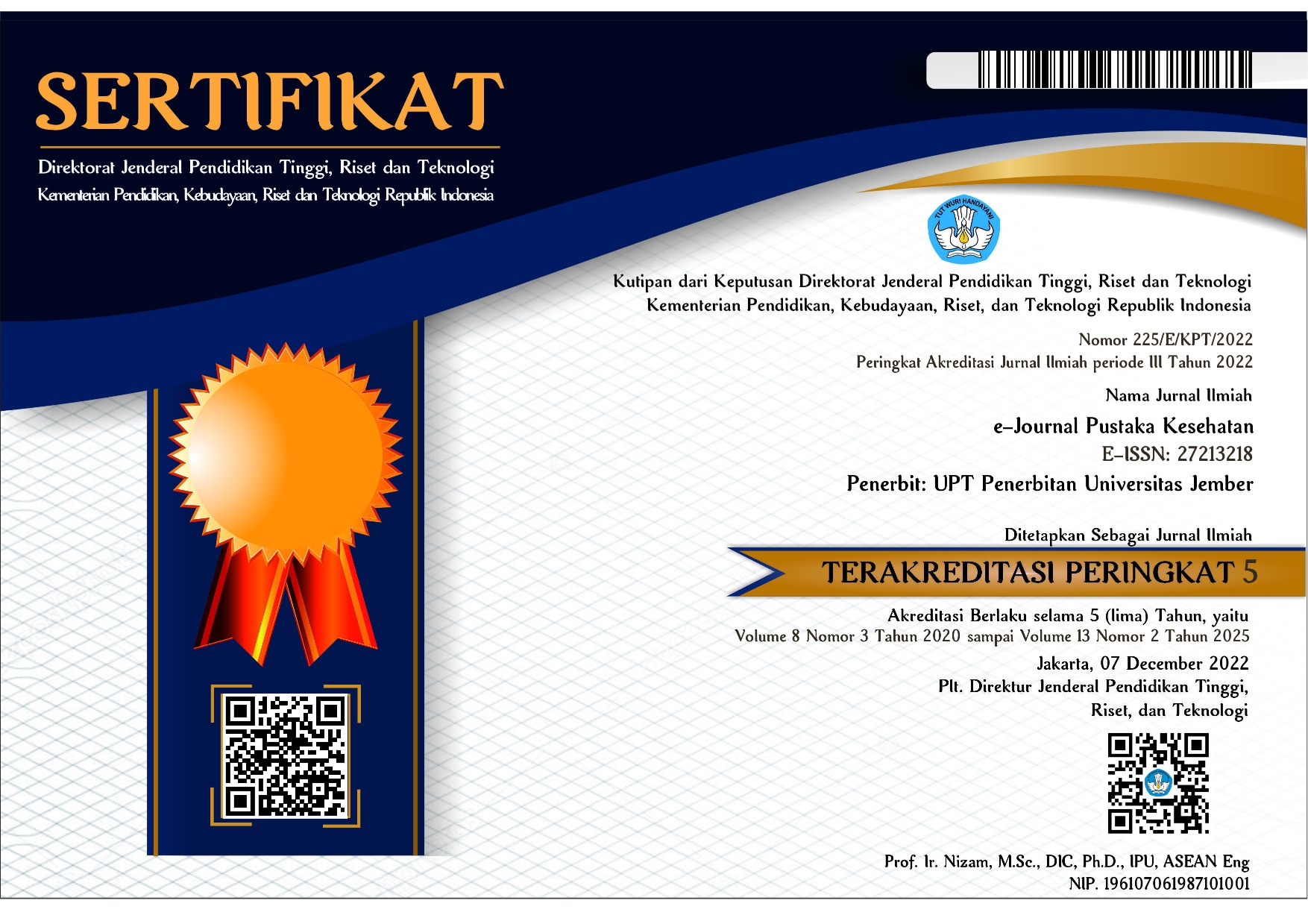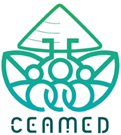Penggunaan Indikator Film Edible dari Antosianin Ubi ungu untuk Monitoring Kesegaran Jamur Tiram Putih
DOI:
https://doi.org/10.19184/pk.v11i3.11938Keywords:
Anthocyanin; film edible membrane; freshness sensor; white oyster mushroomAbstract
Agriculture products as foodstuffs are needed by many people. One of the processed agriculture products that people like is white oyster mushroom. This was followed by requirements for the quality of white oyster mushroom products, so the analytical tool was needed to determine the freshness of white oyster mushrooms easily and practically. This study aimed to develop an edible freshness sensor based on sweet potato anthocyanin (Ipomoea batatas L.) with an edible membrane mixed between chitosan and corn starch. The edible freshness sensor can be applied to determine the freshness level of white oyster mushrooms with various parameters. The evaluation of the freshness of white oyster mushrooms included shrinkage weight test, pH value, texture value, and sensory evaluation. In determining the value of mean green, the color change of an edible freshness sensor was observed visually and measured using the ImageJ program. The results showed that a change in the color of the freshness sensor is dark purple when the white oyster mushroom is fresh, light purple when the white oyster mushroom is still fresh, and green when the white oyster mushroom is no longer fresh. The value of mean green from the edible freshness sensor increase with decreasing the freshness level of white oyster mushroom.
Downloads
References
[2] Kuswandi B. 2017. Freshness Sensors for Food Packaging.
[3] Srivastava S, Sinha R, Roy D, Toxicological effects of malachite green. Aquatic Toxicology. 66: 319-329.
[4] Zhang X, Lu S, Chen X, A visual pH sensing film using natural dyes from Bauhinia blakeana Dunn, Sensors Actuators, B Chem., vol. 198, pp. 268–273, 2014.
[5] Choi I, Lee JY, Lacroix M, Han J, Intelligent pH indicator film composed of agar/potato starch and anthocyanin extracts from purple sweet potato, Food Chem., vol. 218, pp. 122–128, 2017.
[6] Bourtoom T. 2008. Edible film and coating: characteristic and properties. International Food Research Journal. 15(3): 237-248.
[7] Armanzah RS, Hendrawati TY. 2016. Pengaruh waktu maserasi zat antosianin sebagai pewarna alami dari ubi jalar ungu (Ipomoea batatas L. Poir). Seminar Nasional Sains dan Teknologi 2016. 8 November 2016.
[8] Murni S. Pawignyo WH, Widyawati D, Sari N. 2013. Pembuatan edible film dari tepung jagung (Zea Mays L.) dan kitosan. Pengembangan Teknologi Kimia untuk Pengolahan Sumber Daya Alam Indonesia. 5 Maret 2013: 2.
[9] Syarief, Irawati. 1989. Teknologi Penyimpanan Pangan. Jakarta : Penerbit Arcan.
[10] Handayani R. 2008. Pengemasan Atmosfer termodifikasi Jamur Tiram Putih (Pleurotus ostreatus) [Skripsi] Departemen Teknologi Industri Pertanian FakultasTeknologi Pertanian Institut Pertanian Bogor.
Downloads
Published
Issue
Section
License
e-Journal Pustaka Kesehatan has CC-BY-SA or an equivalent license as the optimal license for the publication, distribution, use, and reuse of scholarly work. Authors who publish with this journal retain copyright and grant the journal right of first publication with the work simultaneously licensed under a Creative Commons Attribution-ShareAlike 4.0 International License that allows others to share the work with an acknowledgment of the work's authorship and initial publication in this journal.







